After seven blogs worth of historical women harp guitarists, it’s time to close with today’s female players, who are making history of their own.
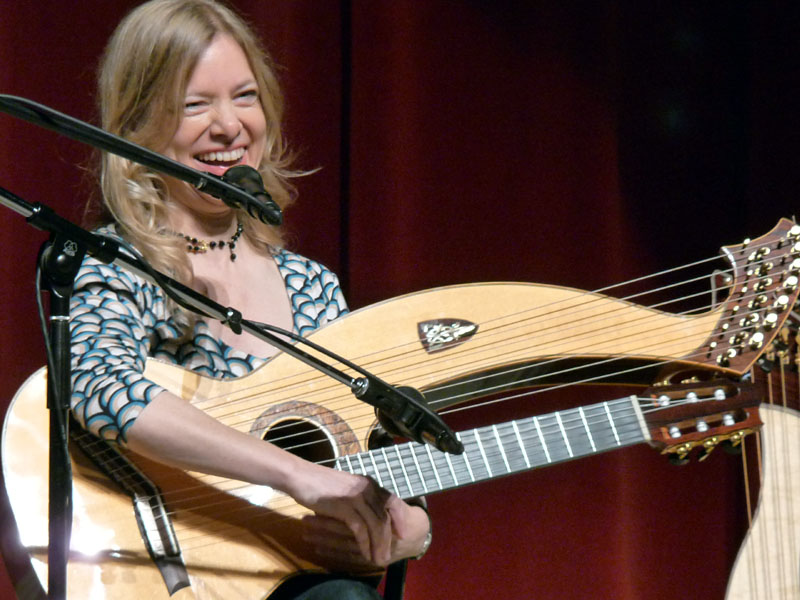
At the top of the pack and the peak of her powers, is the popular virtuoso fingerstyle player Muriel Anderson, who surely needs no introduction – only to say that she has done as much or more to promote the harp guitar than most of the top male players. For this, she was honored with a Lifetime Achievement Award at 2020’s (virtual) Harp Guitar Gathering. Inspired by seeing Michael Hedges, she commissioned her first instrument (the Langejans) and was the sole woman player at Stephen Bennett’s inaugural Gathering in 2003. I was there to see the very beginnings of her efforts on the new instrument, and I’ve watched her HG-playing grow exponentially over these last 18 years as she added new instruments to her arsenal – the Doolin “harp requinto,” sharping levers, super-trebles, the works. I always found it astonishing how she could use any harp guitar and immediately play her entire repertoire on it – steel, nylon, large or small, sub-bass count, super-trebles or not, neck profile – nothing affects her ability to perform her often-demanding material. Despite her super-busy schedule, she’s managed to attend nearly every Gathering over the years, and has been an important part of that event. I’ve had the honor of working with her on no less than four of my Harp Guitar Music compilations, for which she arranged and recorded brand new harp guitar arrangements, each part of a new “history-making” project. A class act who I enjoy most when we get her slap-happy with uncontrollable crying laughter.

(Above) When out on the Atlantic coast, she switches to the small Emerald carbon fiber harp guitar (for “HG overboard!” emergencies).

Only the second woman to perform as a feature at the Harp Guitar Gathering: Stephanie Jackson. Playing a small nylon-string instrument by Mike Brittain, she attended twice; I hope she can one day return. I’ve carried her debut harp guitar CD at Harp Guitar Music since 2009.
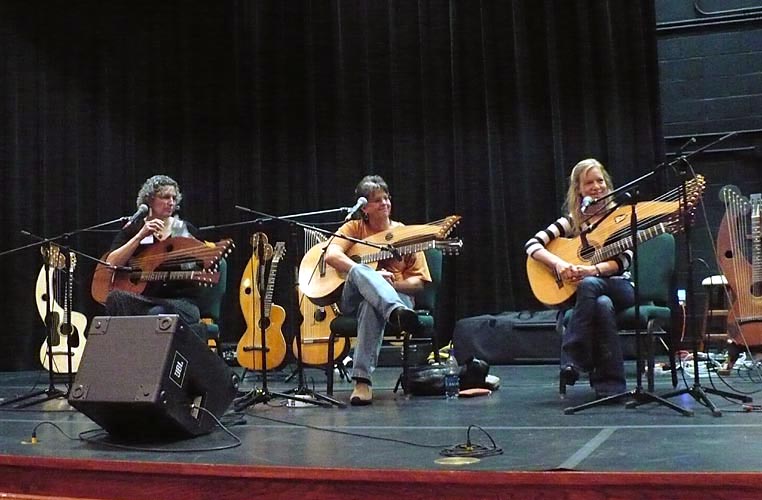
Determined to profile women harp guitarists, Stephen asked Muriel to host a panel at HGG5. Her collaborators were two Gathering semi-regulars – Nancy Conescu (wife of builder Mike Doolin) and Kim Person (recording engineer for SB, Tommy Emmanuel and other acoustic guitar greats). While both are predominately 6-string players (as once was Muriel), they know their way around a harp guitar – Nancy owns several and Kim plays a Sedgwick.
Sadly, almost as scarce as women performers at the Gatherings are women participants (festival goers). Three who come to mind are Joyce Mauer, Jody Butler (who bought Muriel’s first HG) and Mary Pat Cook (harp-mandolin). SB and all the Harp Guitar Gathering guest hosts have always been on the lookout for both new and diverse players. Frustratingly, women remain elusive.
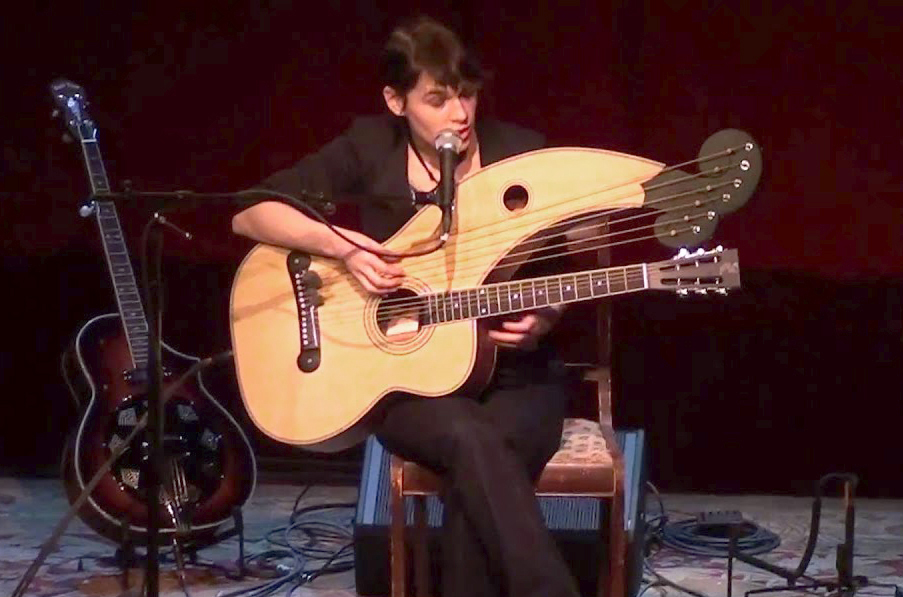
Popular Kaki King might make a great addition. One constant conundrum for Gathering featured performers – for any potential “guest artist” – has been the amount of harp guitar material each has prepared. While Stephen or Andy Wahlberg might have a couple hundred tunes and Muriel might have dozens, most players come from 6-string backgrounds – and it often takes quite some time to develop a repertoire of more than a great tune or two for one’s newly added harp guitar!
Whenever possible, we’ve tried to feature Gathering performers who specialize in historical music. This has typically meant someone playing a 10-string (4-bass) 1800s-reproduction instrument. The many excellent virtuosos so far have all been guys. Here are three women from Europe that commonly play historical music using 1, 2 or 3 floating basses:
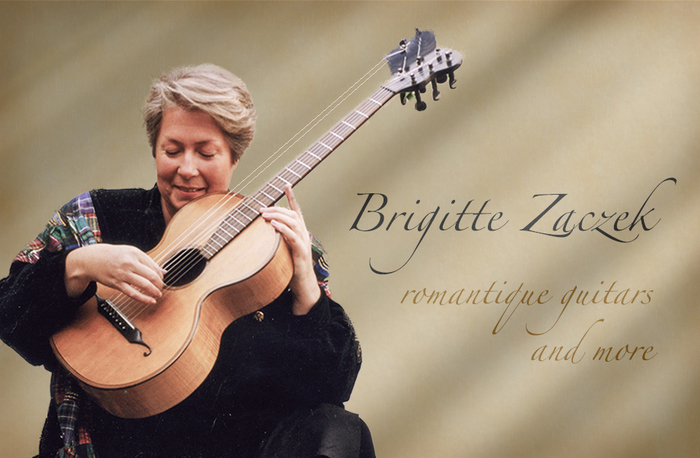
The wonderful Brigitte Zaczek, from Vienna, has a fantastic collection of historic guitars and plays them. She’s done 2 CDs worth of Early Romantic repertoire using some of her floating-bass instruments.
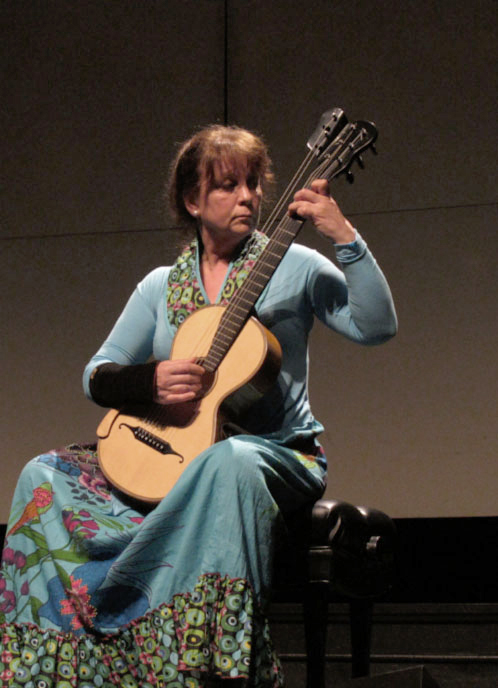
Raphaella Smits of Belgium has long seen the benefit in having an extra bass string or two. I shot this photo when she performed at the late great La Guitarra California Festival in Santa Barbara.
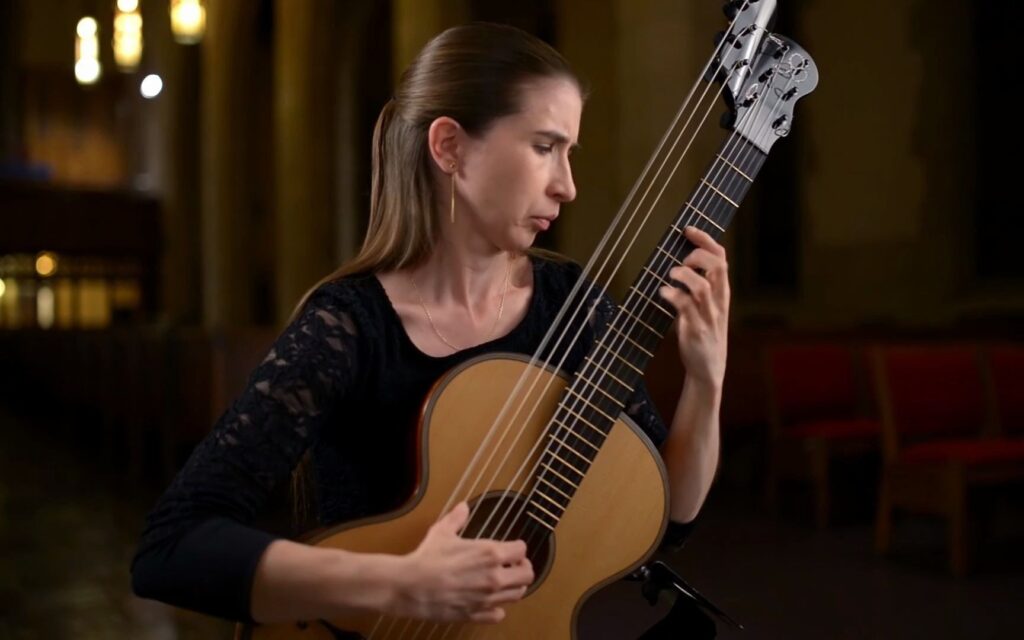
Relative newcomer to floating-bass Early Romantic guitars is Petra Poláčková of the Czech Republic, who, in addition to 6-string classical guitar, routinely performs now on 8- and 9-string reproduction floating-bass guitars by Jan Tuláček.
You’ve probably sensed by now that the percentage of modern women-to-men harp guitarists is even smaller than it was in the past. And you’re right; I put the statistics at just a third of what we’ve seen from the nearly one hundred female faces from my last seven posts. How can it be that the field is more male-dominated than ever before?
Well, things finally seem to be improving, and that may be partly due to the explosion of more affordable instruments (which has of course opened up opportunities for all). While boutique harp guitar luthiers show little sign of slowing down, three major brands are now fully established in the worldwide harp guitar landscape, with several hundred instruments out there now in total. Of course, I speak of Tonedevil, Emerald, and the Timberline that I co-designed. And there are already rising stars and hopefuls among their owners.
Following, I take a look at those women I know of who have started to post videos with nice incorporation of sub-basses and harp guitar techniques. I look forward to recordings and perhaps seeing them at a future Harp Guitar Gathering one day!
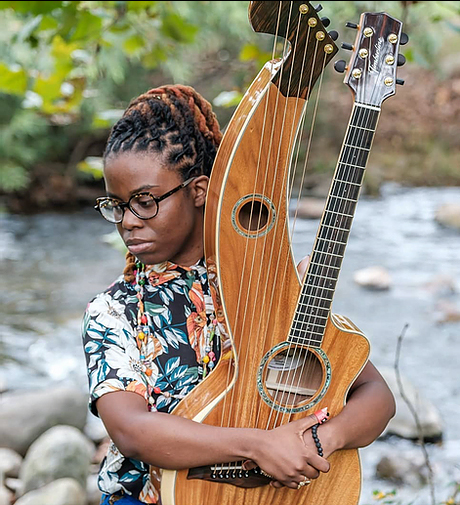
Yasmin “Yaz” Williams (shown here with the fancy Timberline T60 parlor) has gained recognition for her novel playing positions and techniques.

Michelle Qureshi took to her T30 immediately like a duck to water.
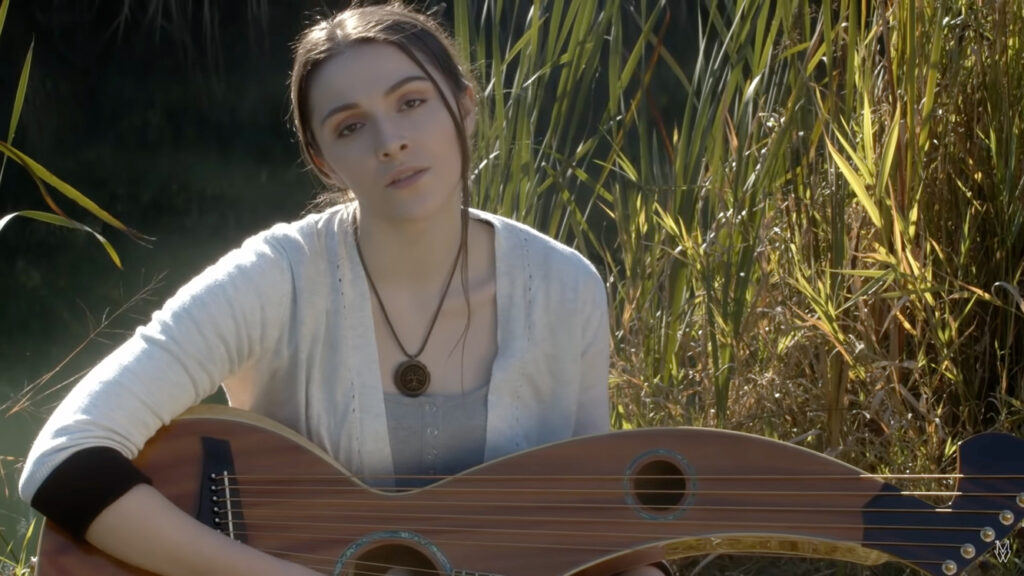
Maiah Wynne is a multi-instrumentalist singer/player who has found a new perfect addition in her Timberline harp guitar.
(I’ll also just mention that new Timberline owners Janet Noguera and Darcy O’Mara are two more I hope to write about next March – I’m putting you ladies on notice!)
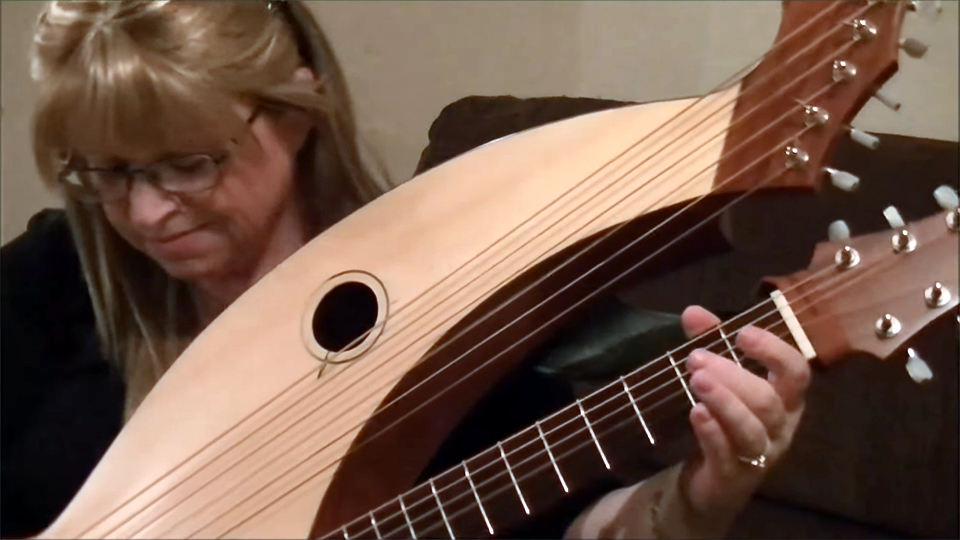
The Powell brothers are getting increasing Tonedevil orders from women as well. Peggy Welty has recently plugged in and found a great new sound.
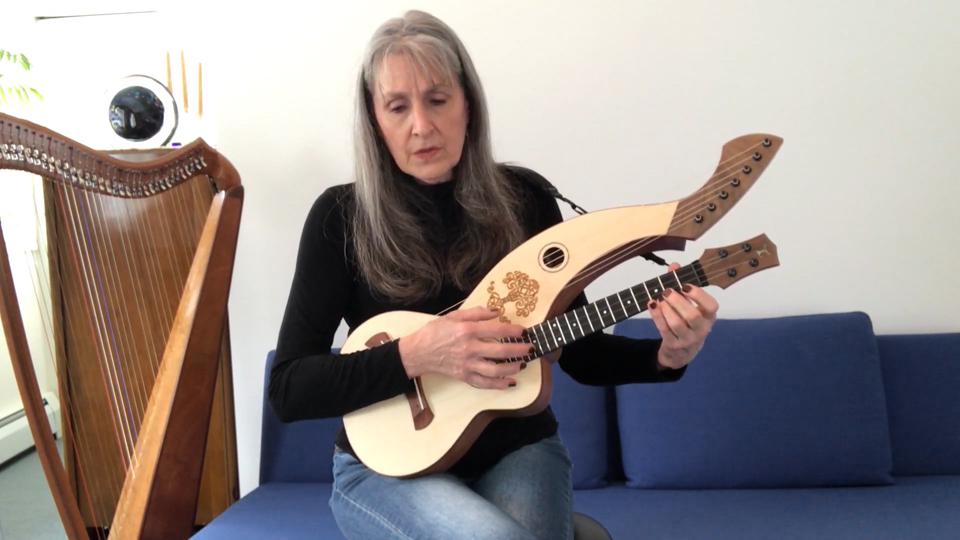
Therapeutic harpist Christina Cotruvo decided to add ukulele to her work, then skipped it to go straight to harp-uke. Seems logical to me! She already has three, including a Tonedevil in her latest video.
Just as there are many guys who prefer to play vintage harp guitars (guilty as charged), can we hope to find women as well?

I know one – my friend Amy Mills, who works at Retrofret in New York and loves old harp guitars, including her Knutsen (which doesn’t need to be plugged in to kick ass).
Speaking of luthiers…I can’t close without mentioning two incredible woman luthiers – as rare in their field as female harp guitarists – who went on to build (if not specialize) in harp guitars!
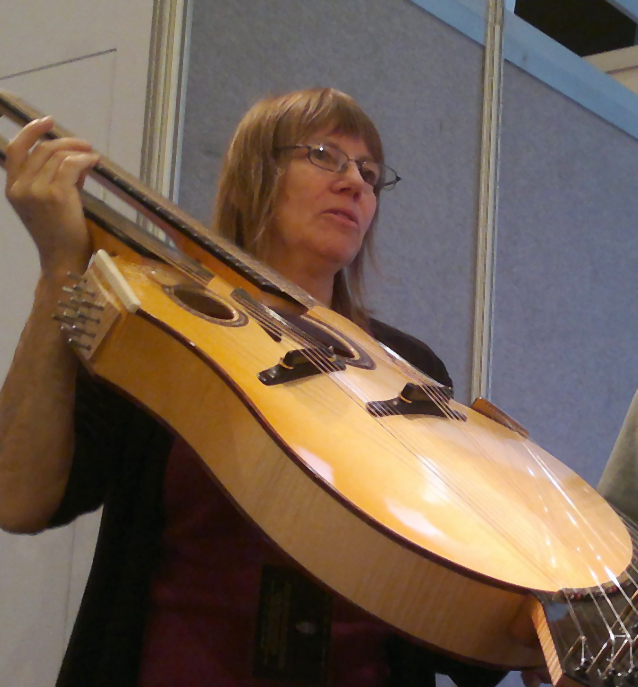
Linda Manzer of course came to harp guitar fame with her 42-string “Pikasso Guitar” for Pat Metheny. That over-the-top “anomaly” led to a continuing run of incredibly diverse multi-string guitars with various harp guitar string banks.
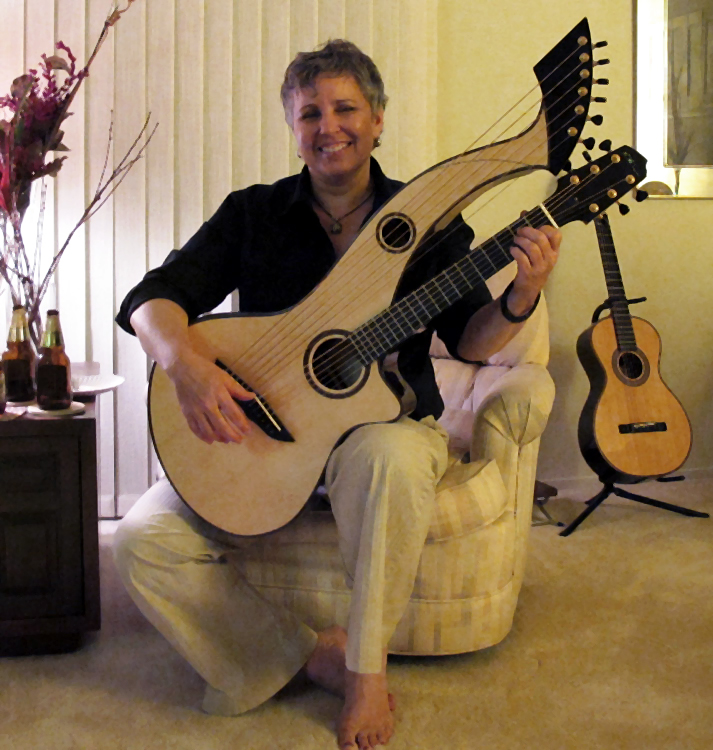
More “traditional” if no less creative is Kathy Wingert, who admits to having been “dragged kicking and screaming” into her first HG build by our friend Frank Doucette. She’s now built so many that I had to stop keeping count! She’s also a very fine player and singer.
So…is that it? OK, well I’ll refrain from closing with a pithy remark and plan on re-taking stock next year!
I hope everyone’s enjoyed my first-ever Women’s History Month celebration. It was nice to see all the female harp guitarists in one centralized series, as well as being the impetus for me getting a lot of new images added to the site. As far as I can tell, this is everything I currently have or know of regarding women who play harp guitars…for now.
The End?
Dear Reader: I mentioned it at the start of this series but it bears repeating. While I do this gratis, all of the incredible images and information – archived on this site for historical as well as entertainment purposes – can continue to be collected, collated, shared and preserved on the web thanks to viewers like you. Any donation large or small to our non-profit Harp Guitar Foundation is tax deductible and helps keep the lights on and the magic happening. Thanks, Sir G

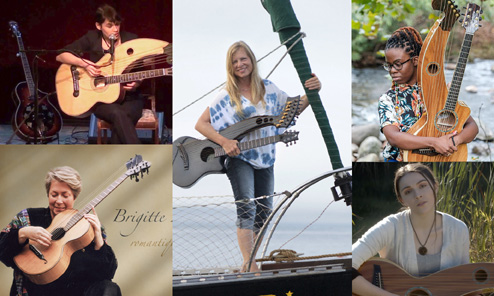
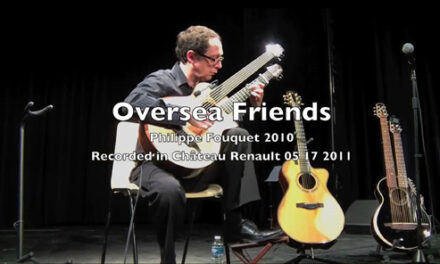
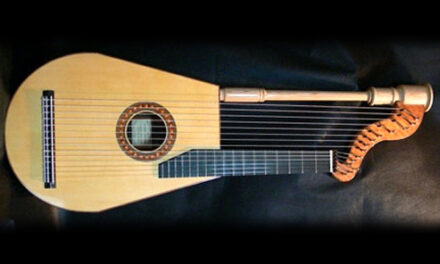
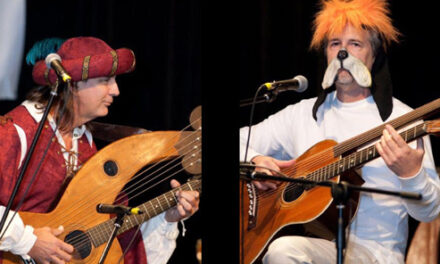
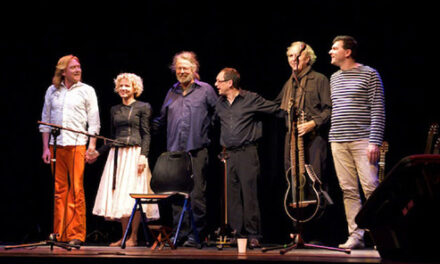
Gregg, I have really enjoyed your whole series. Thank you for being you! 🙏🏻